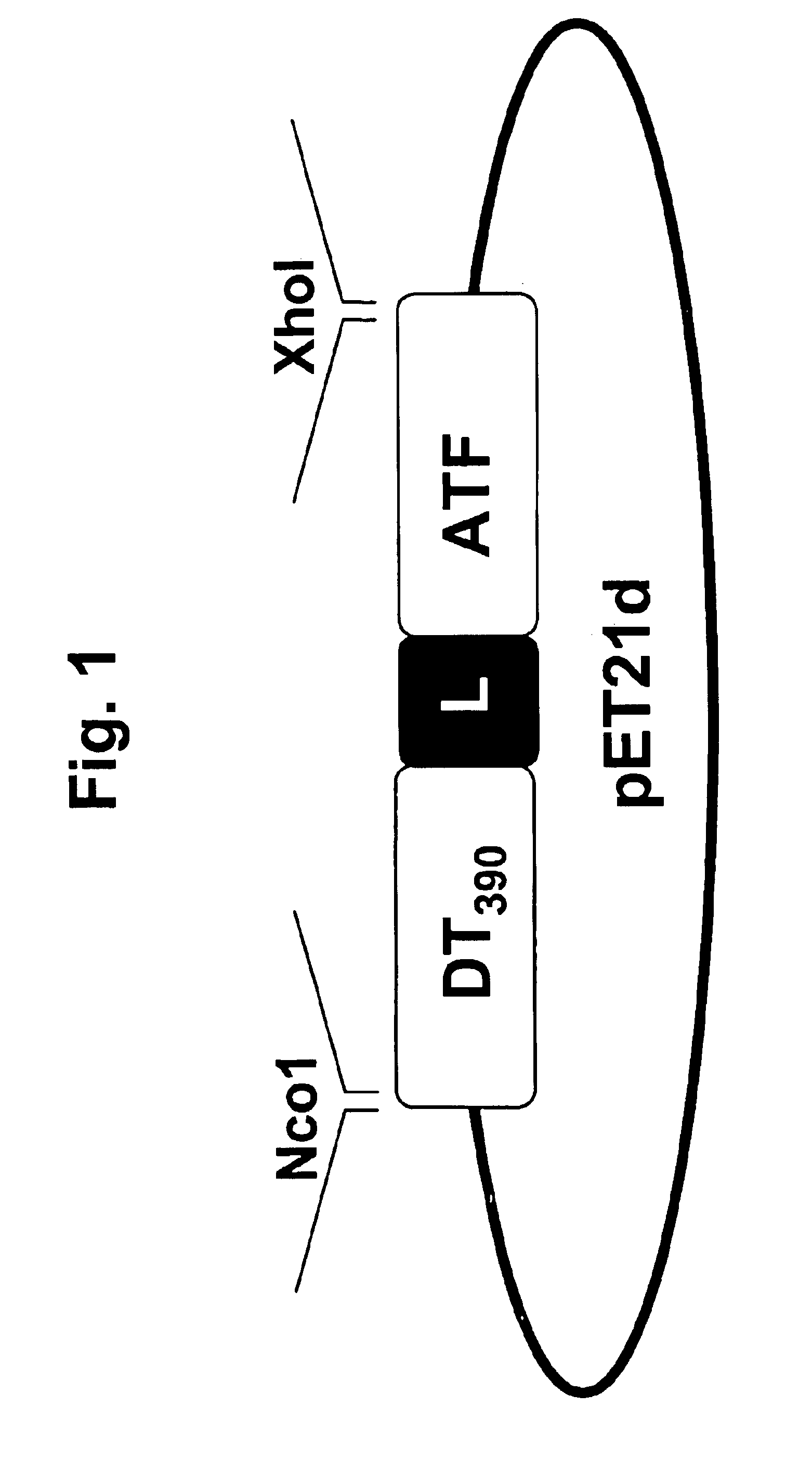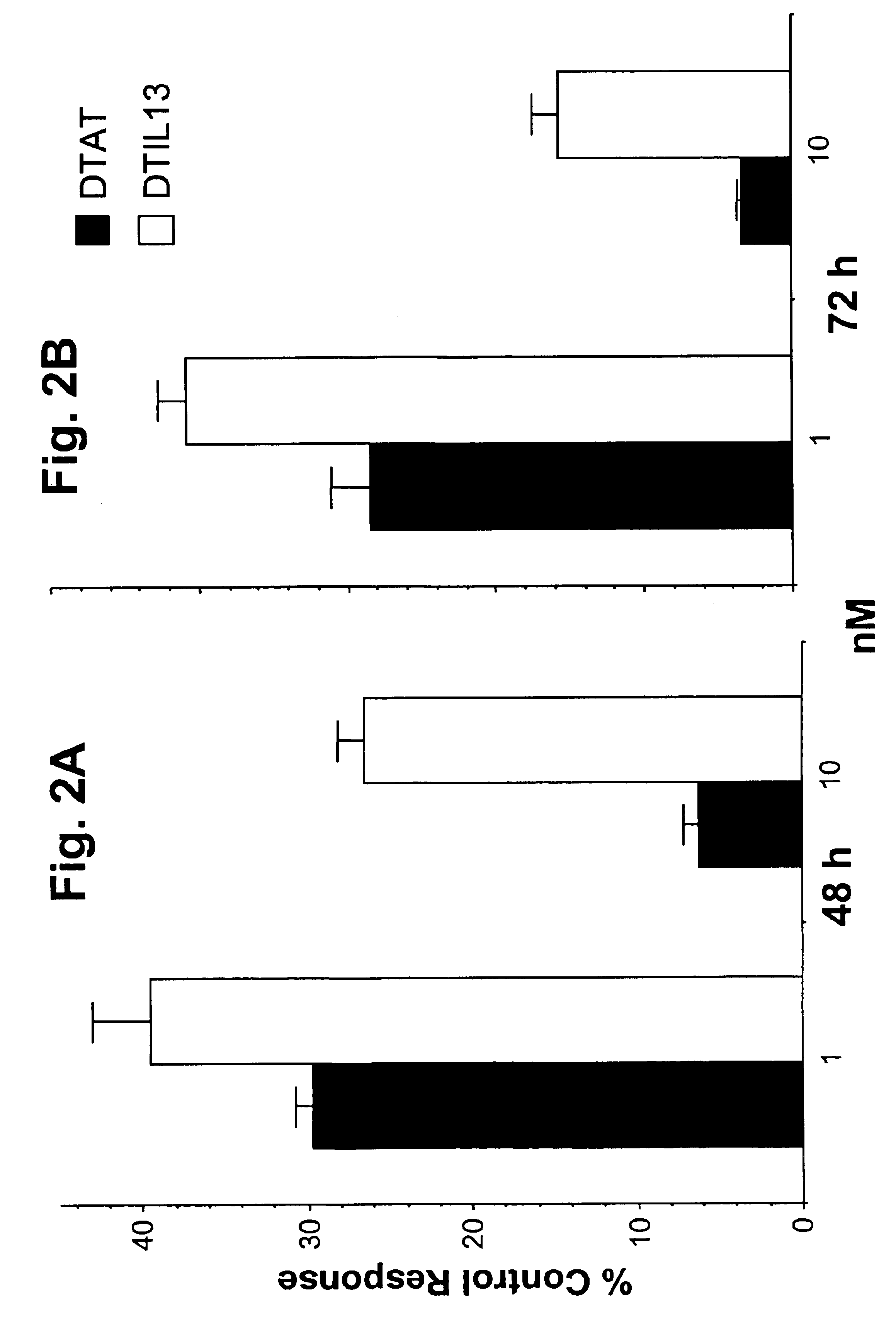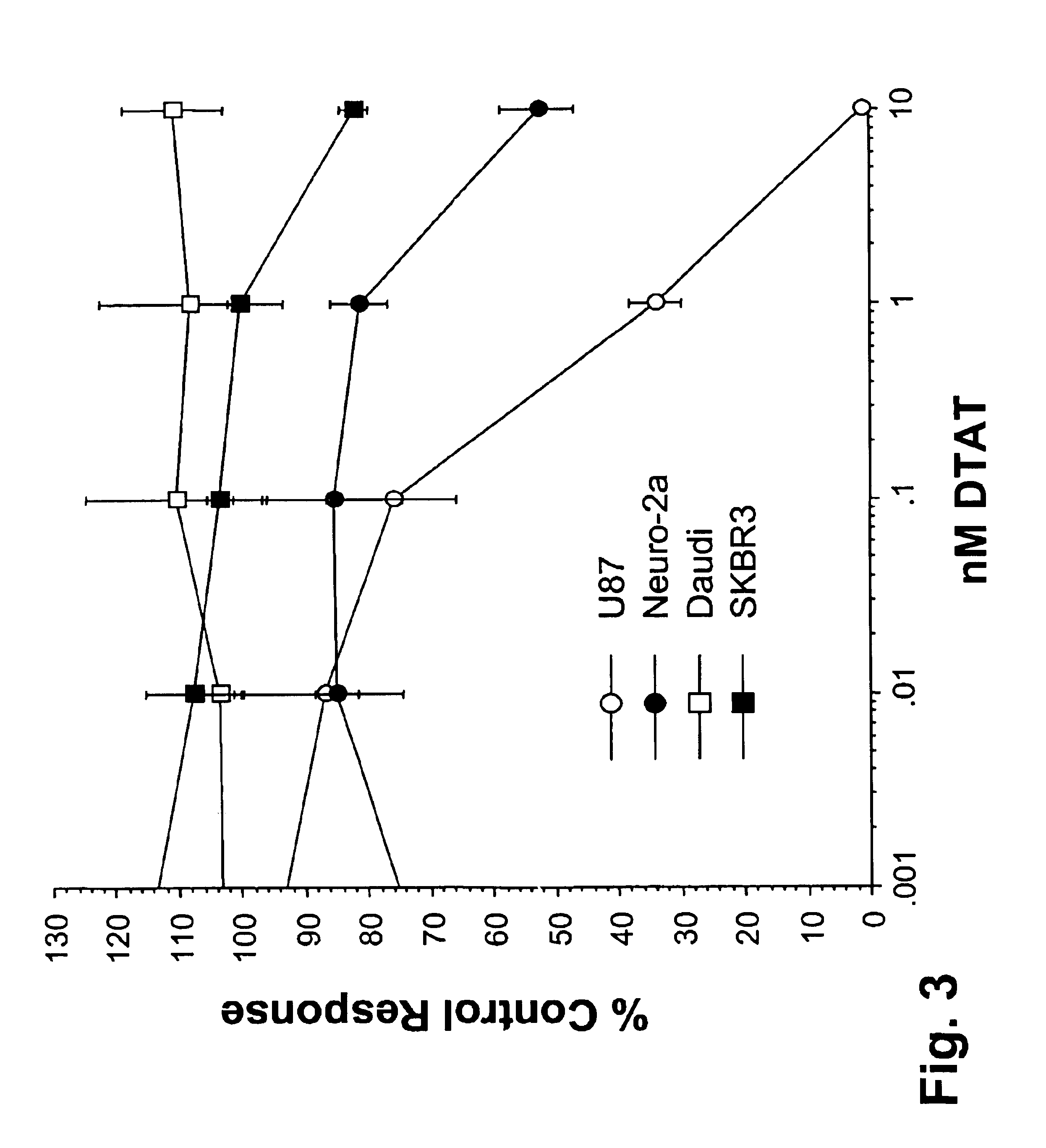DTAT fusion toxin
a technology of fusion toxin and dtat, which is applied in the field of fusion toxin, can solve the problems of complex therapeutic approaches to treating such tumors and non-specific killing mediated by binding to non-target cells
- Summary
- Abstract
- Description
- Claims
- Application Information
AI Technical Summary
Problems solved by technology
Method used
Image
Examples
example 1 -
Materials and Methods
[0058]Plasmid construction: The pDTAT.pET21d expression plasmid (FIG. 1) was constructed by ligating a C-terminally truncated fragment of DT and the ATF of uPA, and subcloning the ligation product into pET21d (Promega, Madison, Wis.). To clone the individual cDNA segments with appropriate restriction sites, the cDNA sequence encoding human mature urokinase (Accession No: E01560) and the gene sequence encoding diphtheria toxin (Corynebacteriophage beta (C. diphtheriae) gene and flanks; Accession No: K01722) were obtained from GenBank. The uPA ATF was assembled by synthesizing 20 oligonucleotides, each 40 bp in length, which covered both strands over the length of the ATF. Oligonucleotides were designed to place a HindIII restriction site at the 5′ end of the assembly, followed by sequences encoding a linker with the amino acid sequence GluAlaSerSerGlyGlyProGlu (SEQ ID NO:1). Oligonucleotides containing a stop codon followed by a XhoI site were positioned at the 3...
example 2 -
Effectiveness of DTAT in vitro
[0067]To determine whether an IL13 / diphtheria fusion protein would kill human glioblastoma cells, DThIL13 was used in cytotoxicity assays as described in Example 1. DThIL13 completely blocked DNA synthesis in the U373 MG line, with an IC50 less than 0.01 nM. In contrast, DNA synthesis in the U87 MG line was inhibited only 45% by 10 nM DThIL13, and the T98 G line was completely unaffected, demonstrating that DThIL13 does not kill all glioblastoma cells. Since uPAR is overexpressed in certain cancers, the effectiveness of DTAT was tested using the U118 MG glioblastoma line. DNA synthesis in these cells was inhibited by approximately 94% after 48 hours of treatment with 10 nM DTAT, while DThIL13 resulted in only a 73% reduction (FIG. 2A). At 72 hours, DTAT had blocked more than 94% of DNA synthesis in the U118 MG cells (FIG. 2B). The difference between DTAT and DThIL13 treatment was statistically significant at both time points (P<0.05).
[0068]To study the ...
example 3 -
Effectiveness of DTAT in vivo
[0072]To determine the effectiveness of DTAT in vivo, a nude mouse model of human glioblastoma was established. U118 MG cells were inoculated into the flanks of nude mice as described in Example 1. After 28 days, mice with established tumors were given a course of DTAT. In a test group of five mice, all tumors regressed following a 5 dose course of 20 μg DTAT injected directly into each tumor every other day. Tumors continued to shrink during the days following treatment such that by study day 62 all but one tumor had completely regressed (FIG. 8). In contrast, tumors in groups of mice treated with DThIL2, DThIL13, or PBS did not regress over the study period, and in fact continued to increase in size (FIG. 9). There was a significant difference in the tumor growth curves on day 48 when the DTAT group was compared to the control groups (P<0.05). These in vivo observations are correlated with the results of the in vitro toxicity studies, and support the h...
PUM
| Property | Measurement | Unit |
|---|---|---|
| Size | aaaaa | aaaaa |
Abstract
Description
Claims
Application Information
 Login to View More
Login to View More - R&D
- Intellectual Property
- Life Sciences
- Materials
- Tech Scout
- Unparalleled Data Quality
- Higher Quality Content
- 60% Fewer Hallucinations
Browse by: Latest US Patents, China's latest patents, Technical Efficacy Thesaurus, Application Domain, Technology Topic, Popular Technical Reports.
© 2025 PatSnap. All rights reserved.Legal|Privacy policy|Modern Slavery Act Transparency Statement|Sitemap|About US| Contact US: help@patsnap.com



